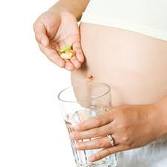
This is to address some great questions about fish oil that Katie sent in.
Katie asked:
after reading about fish oil and its obvious benefits, I finally bought some Carlson Super Omega-3 Fish Oil Concentrate soft gels yesterday at Whole Foods.
I have several questions I have tried to get answered via this site and the Internet, but can't seem to find clear answers, so I am throwing them out here, in hopes you can help.
1. The bottle says"Each Carlson Super Omega — 3 soft gel contains 1000 mg (1 gram) of a special concentrate of fish body oils from deep, cold-water fish which are especially rich in the important Omega-3's EPA and DHA." However, the Supplemental Facts read EPA 300 mg DHA 200 mg Other Omega-3's 100mg. I believe that adds up to 600mg. Right? There is no mention of the other 400 mg. Where are they? I'm very confused about this. Can you explain this to me? There is also Natural Vitamin E — 10 IU…incase that means something.
2. How many pills/mg am I supposed to take? I read between 1000 mg and 3000 mg. Which makes me confused again because even though the bottle says 1000 mg in each pill I can only find 600 of them! I want to make sure that I am taking enough, but not taking too much! How much do you take? Also, do I work up to that or just dive in?
3. Last question…is there anything else I should be taking with the fish oil? I know that sometimes if you take something you need to supplement with something else. Is that the case here?
Thank you in advance for your advice and information!
My response:
Katie, these are really great questions and something that I am often asked by my clients. Here's the scoop:
1. The dosage on the ingredient list can indeed be very confusing and frankly I believe it is a way in which some supplement companies try to give the impression that you are getting a better product with higher potency, but it can be misleading. When the label states something like…"contains 1000 mg marine oil", you are not getting the complete information.
The critical ingredients and the amounts you need to know about are — how much EPA (eicosapentanoic acid) and DHA (docosahexaenoic acid) are contained in each capsule.
EPA and DHA have been shown to support healthy functioning of the cardiovascular, immune, gastrointestinal, and musculoskeletal systems. EPA is also an excellent anti-inflammatory and helpful in conditions such as insulin resistance, diabetes and auto-immune related inflammation.
DHA is an important factor for those with PCOS as it supports many aspects of health including pregnancy, fetal development, and healthy neurological function.
The other"marine lipids" are simply the total fat of the fish, where the EPA and DHA are the active portions of that fat. It is the"actives" that are providing the therapeutic value. The vitamin E in the capsules is for preservative purposes and helps prevent rancidity of the fat.
2. Regarding the dosage you should take, that is a harder question to answer because it will depend on what you are trying to target. Those with PCOS should be targeting anywhere from 500 — 1000 mg. DHA. So you need to know how much DHA is in each cap, for example if the capsule has only 200mg. of DHA, you'll need to take 3 of them to get approximately 500mg. You can then work up to a higher dose, always start with the lower dose and work your way up. Sometimes it is easier to get a liquid version that is high potency versus taking handfuls of pills to achieve the same dose.
I do not recommend that you take a liquid fish oil that is derived from Cod Liver Oil as the source as it usually has a high amount of Vitamin A and it is possible to get toxic doses of vitamin A. Another thing to note is that in a combination EPA/DHA cap, the dosage EPA will usually be higher than the amount of DHA, that is no problem. The EPA will only be of additional benefit.
Don't hesitate consulting with a registered dietitian knowledgeable both in PCOS and supplements in order to have your supplementation tailored to your specific health needs — remember we are all different, with unique physiology, medical history and requirements.
3. Fish Oil does not have to be taken with anything else to enhance its function. It can be taken all at once, with meals, between meals — it is very flexible this way.
Here are a couple of additional tips:
- if you tend to"burp" back fish oil, make sure to buy a brand that comes in an"enterically coated capsule", they might cost a few cents more, but it's worth it.
- refrigerate your fish oil to protect it and this also can help reduce"burp back".
- contributes to creating beautiful, healthy skin.
One last fun fact about fish oil. Most of it actually comes from the southern hemisphere not as you might think from the deep waters off Norway!
Here's to fish oil!
Carmina McGee, MS, RD, LE
Ventura, California
805.816.2629
info@carminamcgee.com
















